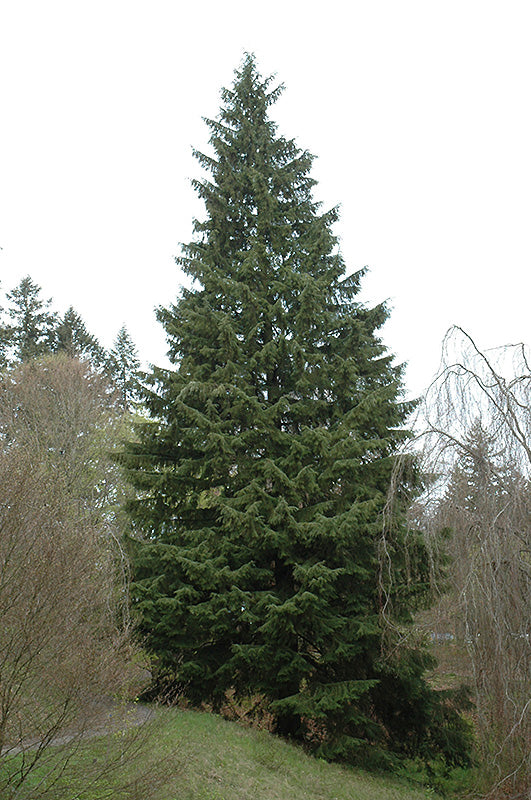Western Hemlock is an evergreen tree with a strong central leader and a distinctive and refined pyramidal form. It lends an extremely fine and delicate texture to the landscape composition which can make it a great accent feature on this basis alone.
This tree will require occasional maintenance and upkeep, and is best pruned in late winter once the threat of extreme cold has passed.
Western Hemlock is primarily valued in the landscape for its distinctively pyramidal habit of growth. It has dark green foliage with grayish green undersides and tinges of chartreuse which emerges light green in spring. The glossy sprays of foliage remain dark green throughout the winter. The brick red fruits are held in cones in mid fall.
Western Hemlock will grow to be about 90 feet tall at maturity, with a spread of 40 feet. It has a low canopy with a typical clearance of 3 feet from the ground, and should not be planted underneath power lines. It grows at a medium rate, and under ideal conditions can be expected to live for 70 years or more.
This tree performs well in both full sun and full shade. It does best in average to evenly moist conditions, but will not tolerate standing water. It is particular about its soil conditions, with a strong preference for rich, acidic soils. It is quite intolerant of urban pollution, therefore inner city or urban streetside plantings are best avoided, and will benefit from being planted in a relatively sheltered location. Consider applying a thick mulch around the root zone in winter to protect it in exposed locations or colder microclimates. This species is native to parts of North America.
Details
Botanical Name
Tsuga heterophylla
Common Name
Western Hemlock
Hardiness Zone
- 4
Appearance
Max Height
40 Feet
Max Spread
40 Feet
Plant Form
- Pyramidal
Foliage Colour
- Green
Fall Colour
Flower Colour
Edible
Edible Component
Edible Harvest Period
Edible Use
Fruit Colour
Growing
Flowering Period
Moisture
Average To Moist
Sunlight
Full Sun To Shade
Maintenance
Medium
Deer Resistance
Get more information about this plant and others with our comprehensive plant finder tool.




